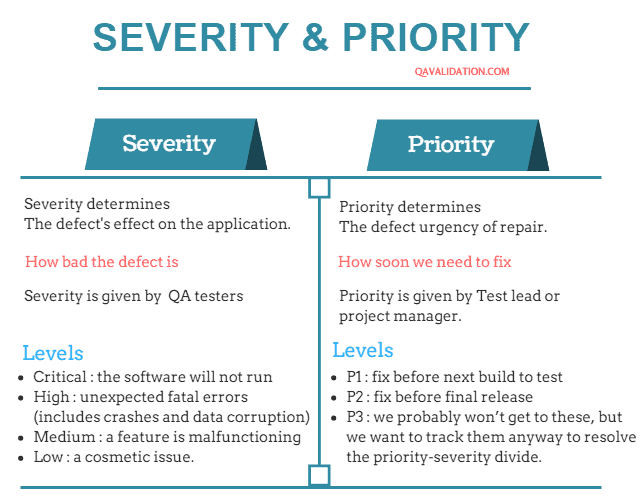High Severity & Low Priority :
For example an application which generates some banking related reports weekly, monthly, quarterly & yearly by doing some calculations. If there is a fault while calculating yearly report. This is a high severity fault but low priority because this fault can be fixed in the next release as a change request.
High Severity & High Priority :
In the above example if there is a fault while calculating weekly report. This is a high severity and high priority fault because this fault will block the functionality of the application immediately within a week. It should be fixed urgently.
Low Severity & High Priority :
If there is a spelling mistake or content issue on the homepage of a website which has daily hits of lakhs. In this case, though this fault is not affecting the website or other functionalities but considering the status and popularity of the website in the competitive market it is a high priority fault.
Low Severity & Low Priority :
If there is a spelling mistake on the pages which has very less hits throughout the month on any website. This fault can be considered as low severity and low priority.
NOTE :
It is very important for a QA analyst or a s/w tester to understand the concept of severity and priority very well as the issue fix time line is depending on the level assigned while posting a defect,
priority is used to organize the work. The field only takes meaning when owner of the bug
P1 Fix ASAP in next build
P2 Fix in next build
P3 Fix before next release
P4 Fix if time allows
P5 Unlikely to be fixed
Default priority for new defects is set at P3, but again it depends entirely on the size of the company.
short link – bit.ly/qav-severitypriority
Author: Admin
Experience & exploration about software QA tools & techniques.
Maintaining & writing blog posts on qavalidation.com!
Publishing video tutorials on youtube.com/qavbox

